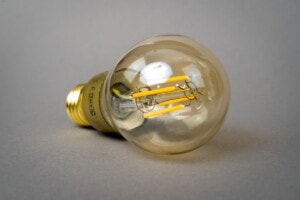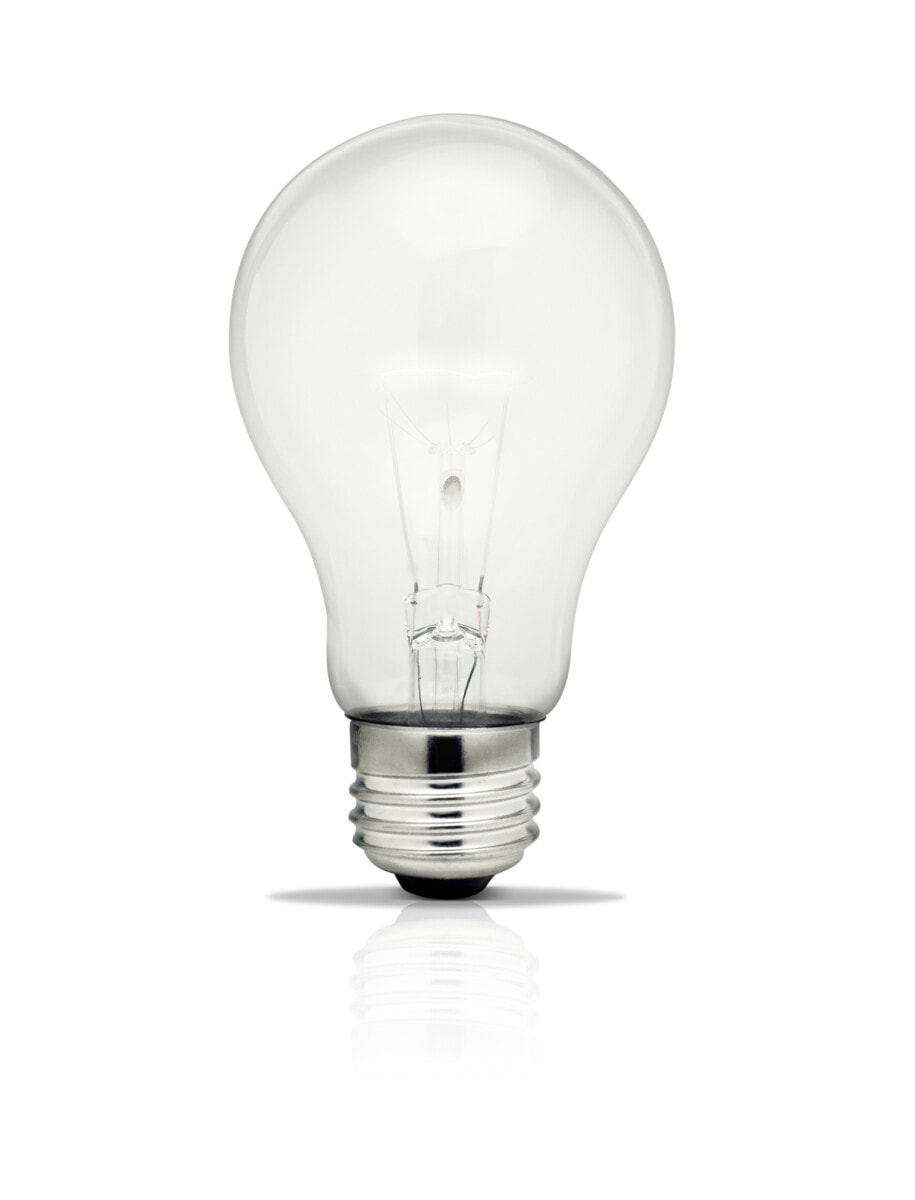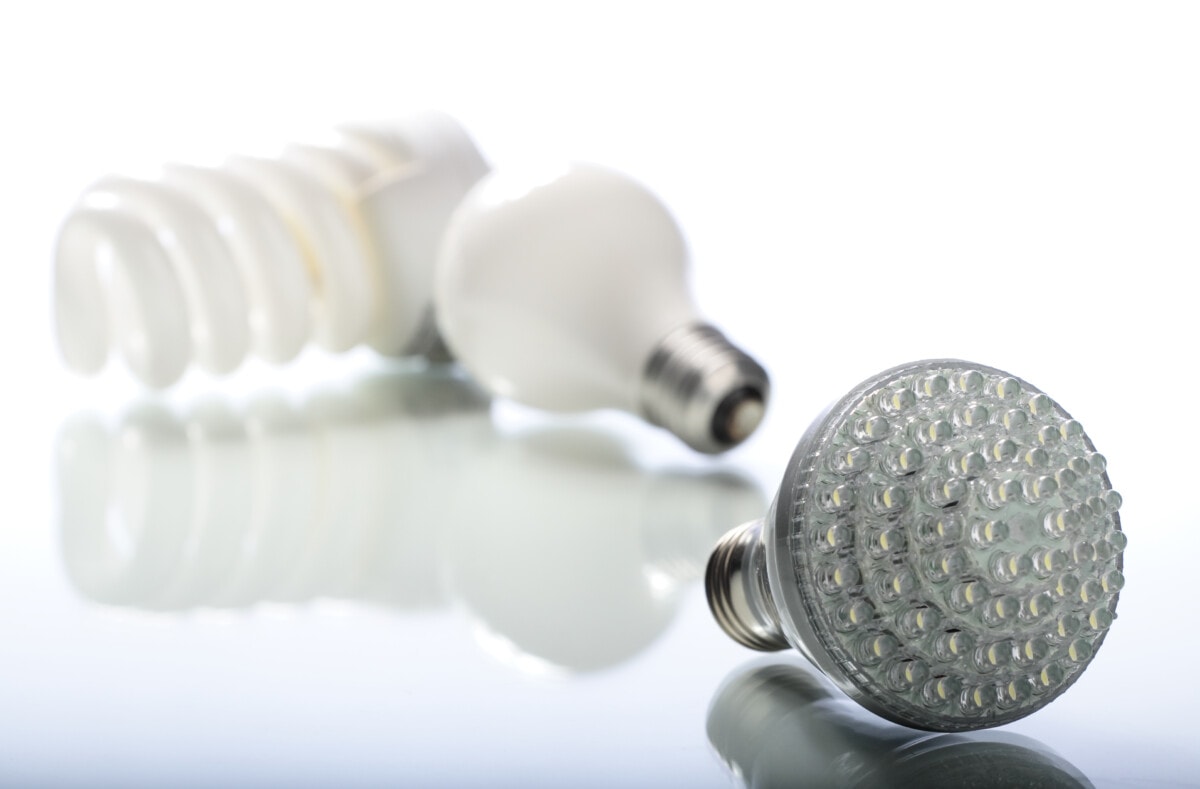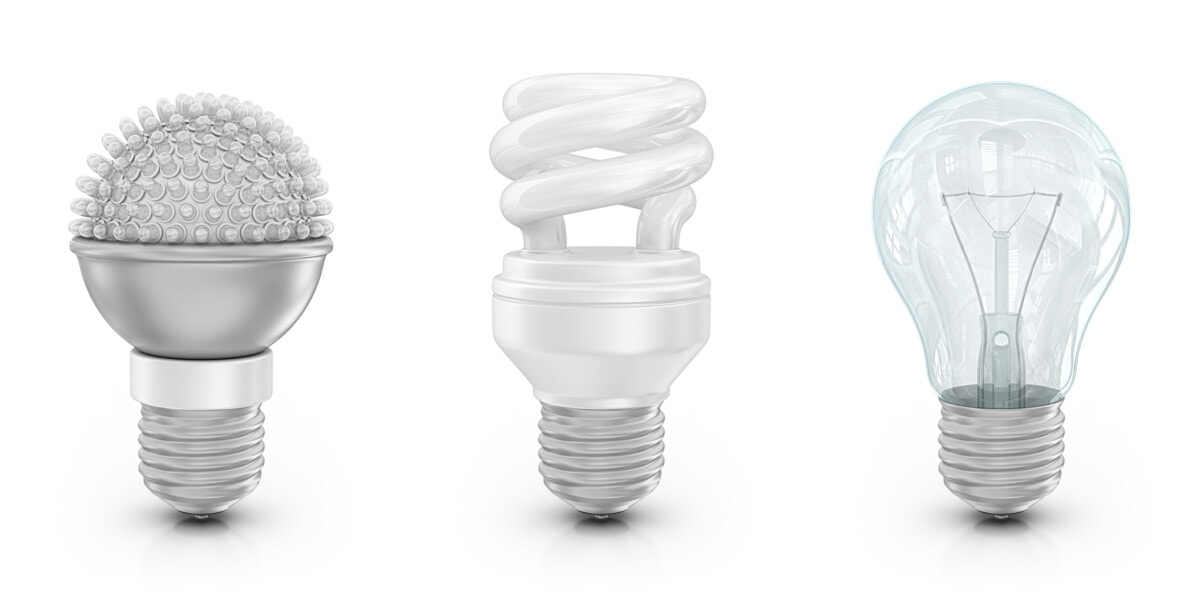
The ruling, effective August 1, phases out incandescent bulbs in favor of efficient LEDs.
Fast facts:
- Homeowners can still use existing incandescents, but can no longer purchase replacements (with a few exceptions) and should start switching to LEDs.
- Switching to efficient light bulbs is estimated to cut US emissions by 222 million metric tons and save consumers around $3 billion over 30 years ($100 every month per home).
- Retailers have already been pulling inefficient bulbs off shelves for over a year in preparation, so consumers won’t notice a large shift.

What happened?
In April 2022, the Department of Energy (DOE) passed a new rule requiring all new light bulbs to emit at least 45 lumens per watt (with a few exceptions), essentially phasing out incandescents. The rule went into effect on August 1, 2023, but has been in the works since 2007. The European Union passed a similar law in 2012.
Because most light bulbs other than LEDs (Light Emitting Diodes) don’t meet these standards, this rule bans all inefficient light bulbs, including incandescents. Businesses can no longer sell inefficient bulbs after August 1, and manufacturers haven’t been allowed to produce inefficient bulbs since January 1, 2023.
Consumers likely won’t see a difference in product selection, however; most retailers have been taking inefficient bulbs off of shelves for a year in anticipation of this ruling.
Why did the government ban incandescent light bulbs?
DOE passed this ruling to help reduce the country’s carbon emissions. Importantly, this isn’t an outright ban on incandescent lights, and some specific ones are exempt, such as those in vehicles, appliances, traffic signals, and emergency lighting. However, all other new incandescents (including halogen lights) will become illegal to sell and purchase if they don’t meet the new efficiency standards. Many compact fluorescent lights technically meet the new standards, but will also be outlawed soon.
Joel Worthington, President of Mr. Electric, a Neighborly company, notes that the government is phasing out incandescent light bulbs because they are very inefficient. “They only convert about 10% of the energy they use into light,” he says. “The rest of the energy is wasted as heat.” In addition to being inefficient, incandescent light bulbs also have a relatively short lifespan; most only last about 1,000 hours.
By contrast, LED light bulbs usually last well over 10 years (with a few outliers). They’re also extremely efficient, converting up to 90% of the energy they use into light. This efficiency helps dramatically reduce waste, cut carbon emissions, and lower consumers’ utility bills. ENERGY STAR rated LEDs provide the most efficiency.

Can you still buy incandescent light bulbs?
Starting August 1, 2023, lightbulbs that don’t meet the efficiency requirements are illegal to sell and purchase (except for a few specialty bulbs). This means it will be very difficult to find new incandescent and halogen light bulbs.
You don’t have to destroy your inefficient light bulbs, though. “As your incandescent light bulbs go out, you can replace them with energy-efficient bulbs,” notes Joel Worthington. If you have a backstock at home, you can continue installing and using them until you run out.
What the incandescent ban means for homeowners
Transitioning from incandescents to LEDs is good for everyone. It helps save you money, lower your carbon footprint, and reduce unnecessary waste. In fact, nearly half of US households already primarily use LEDs.
The new ruling doesn’t mean you have to test and get rid of your inefficient light bulbs immediately. “It simply means that when they burn out and when your supply runs out, you will have to find a more efficient replacement, most likely an LED,” says Joel Worthington. And because LEDs last up to 30 times longer than incandescent lighting, you won’t have to replace them nearly as often.
This decision matters most for those with lower incomes, who generally spend a larger percentage of their income on utility bills. Incandescent lights are cheap but inefficient, and are often the only option in budget stores. This leads to higher electric bills.
Luckily, LEDs have been dropping in price for years. And with new rules, they will likely decrease even more. making them more accessible and helping reduce electricity costs for everyone.
How will switching to LEDs affect your home?
If you primarily use incandescent light bulbs, you may be worried about how switching to LEDs will affect your home’s aesthetic. Luckily, Joel has some good news: “The regulation exempts a few specific incandescent bulbs that you may have around your home, such as chandelier bulbs, grow lights (for gardening), and holiday lights,” he says. “Yes, your holiday lighting is safe.”
For the large majority of bulbs, though, you will have to switch to an efficient option when your current bulbs go out, most likely LEDs.
Some people prefer incandescent lighting because of the quality of light it produces. However, LEDs actually offer a much wider range of color temperatures than most other bulbs, and are highly flexible, with dimmable, multicolored, string, or strip options available.

What happens next?
The incandescent light bulb ban is just one step in a larger effort to make lighting even more energy-efficient. The DOE recently proposed significantly higher efficiency standards, pushing the requirement to 120 lumens per watt. This would essentially phase out every option except LEDs, including fluorescents.
The DOE is also considering new efficiency standards for other types of appliances, such as refrigerators, dishwashers, and washing machines. These standards are designed to help consumers save energy and money, and to reduce greenhouse gas emissions.
It’s important to note that the DOE is not the only organization that is working on energy efficiency standards. The US Environmental Protection Agency (EPA) also sets energy efficiency standards for appliances, such as through the ENERGY STAR program. In addition, many states and local governments have their own energy efficiency standards.
The future of energy efficiency standards is uncertain, but it’s clear that the trend is towards more stringent standards.
The post Incandescent Light Bulb Ban: What This Means for Homeowners appeared first on Redfin | Real Estate Tips for Home Buying, Selling & More.
